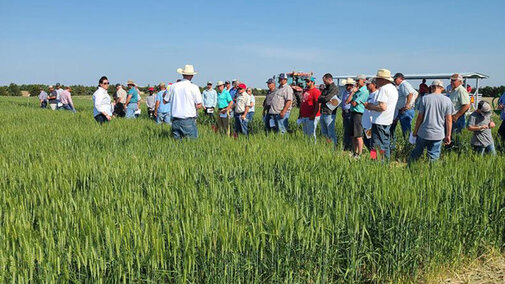Over the generations, the University of Nebraska–Lincoln has been a key partner of Nebraska wheat producers. That connection has bolstered crop productivity and enhanced disease resistance. It’s transformed farming methods, promoting environmental sustainability. Present-day Husker faculty salute this legacy and are building on it.
Larry Flohr, a Deuel County producer and certified seed producer long active in Nebraska’s wheat sector, has seen that history and points to the important advances. He’s a longstanding supporter of the annual wheat variety trials managed by the university. This year’s trials took place in six locations throughout Nebraska in June.
“The exchanges the researchers have during the wheat variety trials allow them to get feedback firsthand from the producers themselves,” said Flohr, who’s been growing wheat since 1978.
Over the decades, Flohr said, Husker researchers “have done an outstanding job relative to issues we had with Russian wheat aphids and specific rust problems — leaf rust, stem rust. They’ve worked on varieties relative to those. All of that came from their interest and how they were directed by their exchange with farmers.”
The university’s multi-faceted relationship with the wheat sector is among the longest and most fruitful of the institution’s partnerships with Nebraska agriculture. Starting in the 1950s, small-grains breeder John Schmidt ultimately developed 28 new wheat varieties with improved disease resistance and stable yield. His successor at the university, Stephen Baenziger, continued that tradition, producing more than 40 wheat cultivars before his retirement in 2021.
The university’s breeding work has, among other things, made Nebraska wheat stand out for its hardiness in winter, Flohr said.
That legacy continues to inspire the university’s present-day wheat researchers, said Katherine Frels, assistant professor of agronomy and horticulture, who has succeeded Baenziger as the state’s small-grains breeder.
“We’ve got this history of developing varieties that are consistent performers and serve our producers well, year over year,” Frels said. “They are stress-tolerant. They have good protein and good baking quality, and they have good yields. So they’re something that our producers can really count on to perform.”

